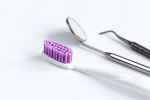Chitosan for vaccine development against SARS-CoV-2

The global spread of SARS-CoV-2 can only be contained through vaccine development. Vector vaccines (DNA and viral) can be produced rapidly and inexpensively with current synthesis technologies. Challenges with DNA vaccines include degradation by DNases, inefficient uptake by antigen-presenting cells, and low immunogenicity. The Quil-A-loaded chitosan particulate adjuvant system (QAC) enables transport of plasmid DNA directly to target cells and delayed release over time. Here, we present two recent studies about chitosan-based delivery systems for vaccines.
drug delivery, Vaccines, SARS-CoV-2, Chitosan HCl
Read more Chitosan for vaccine development against SARS-CoV-2







